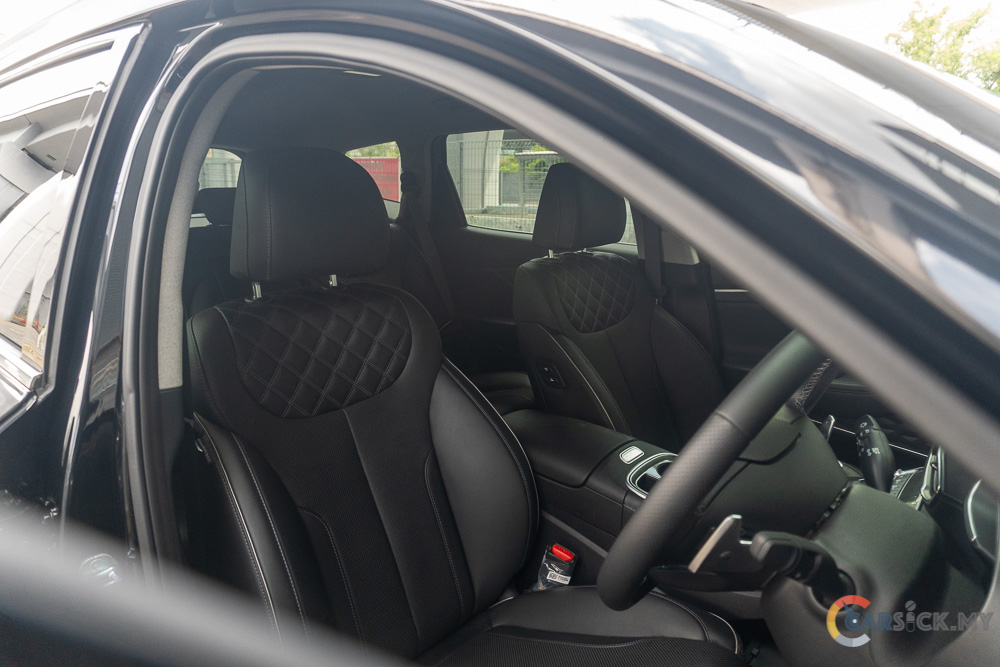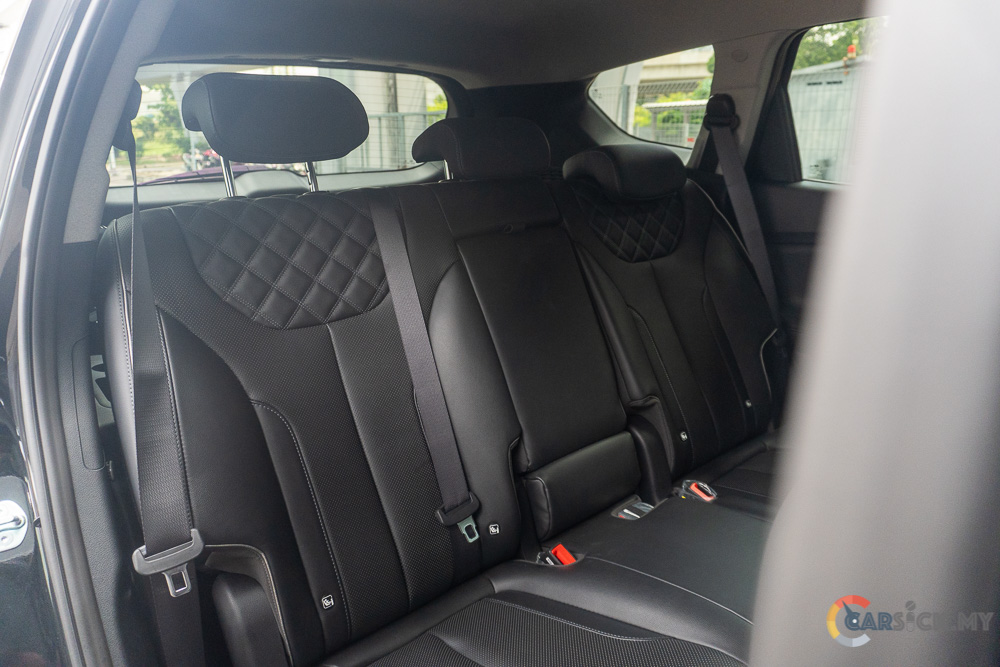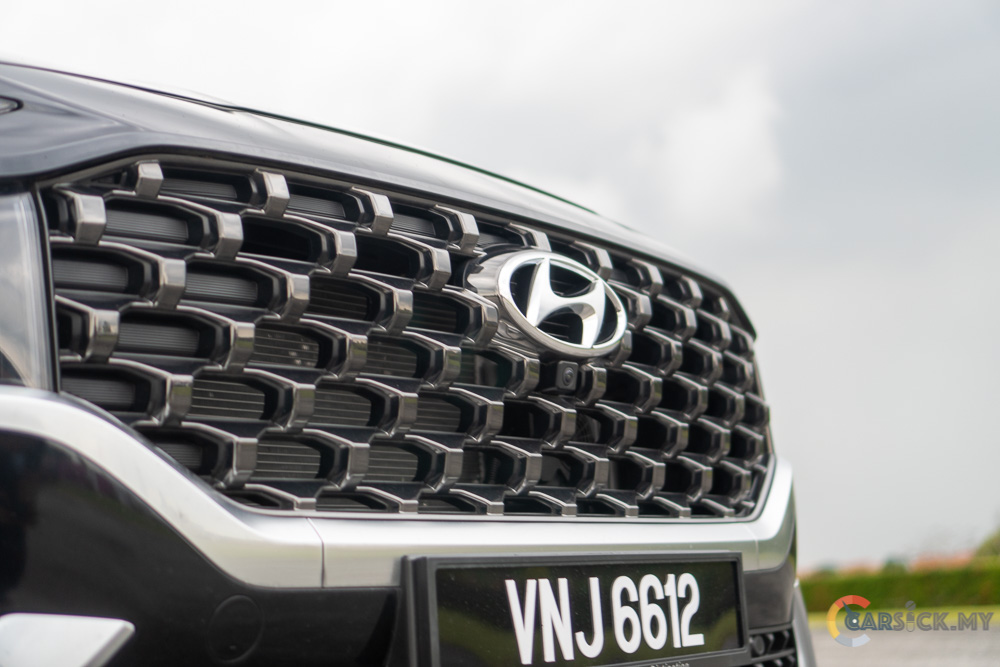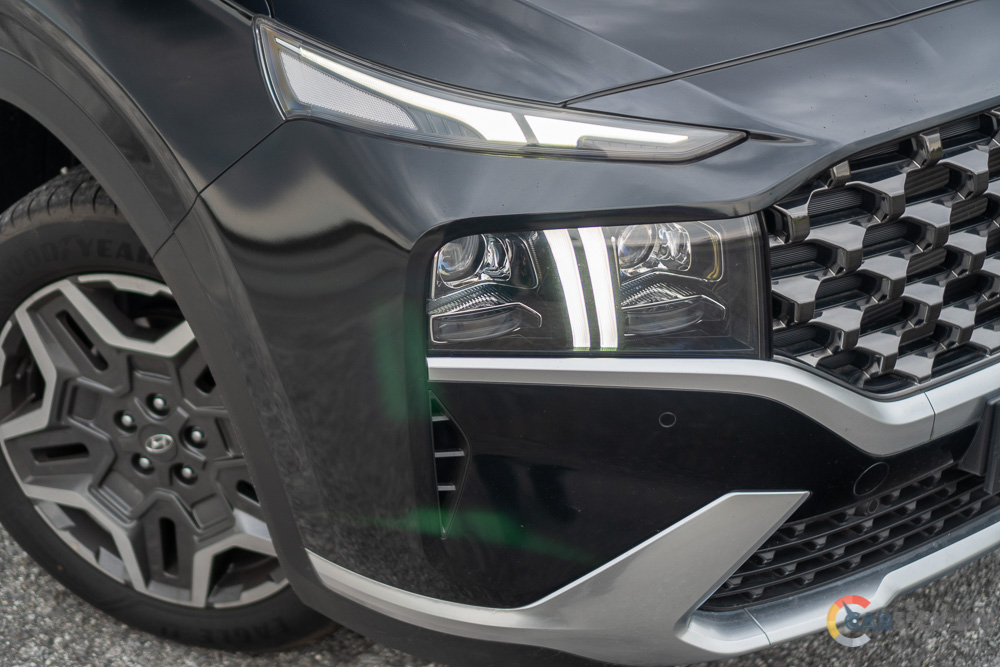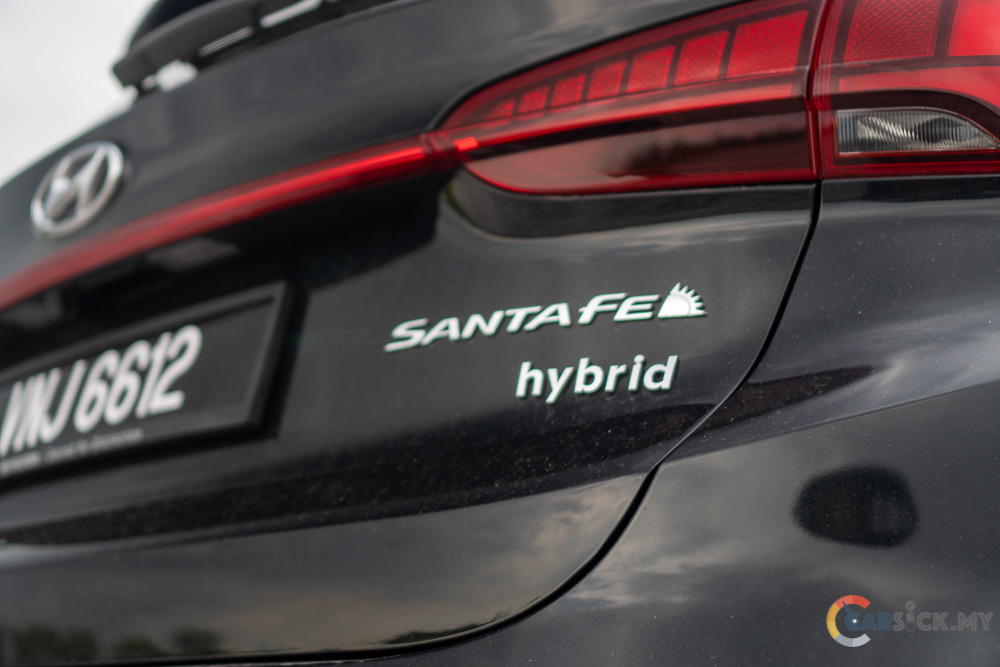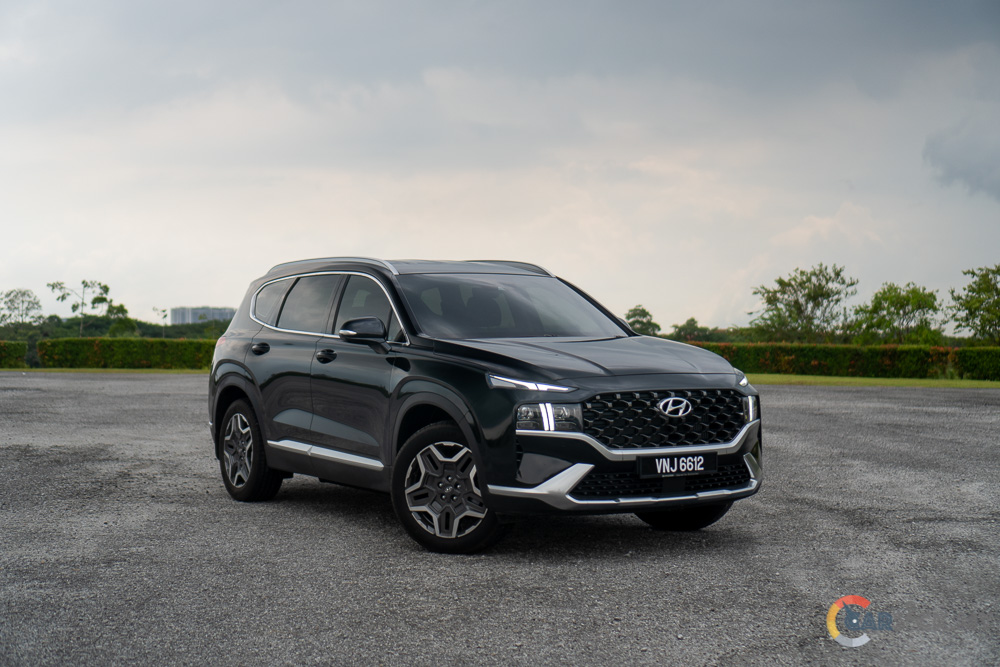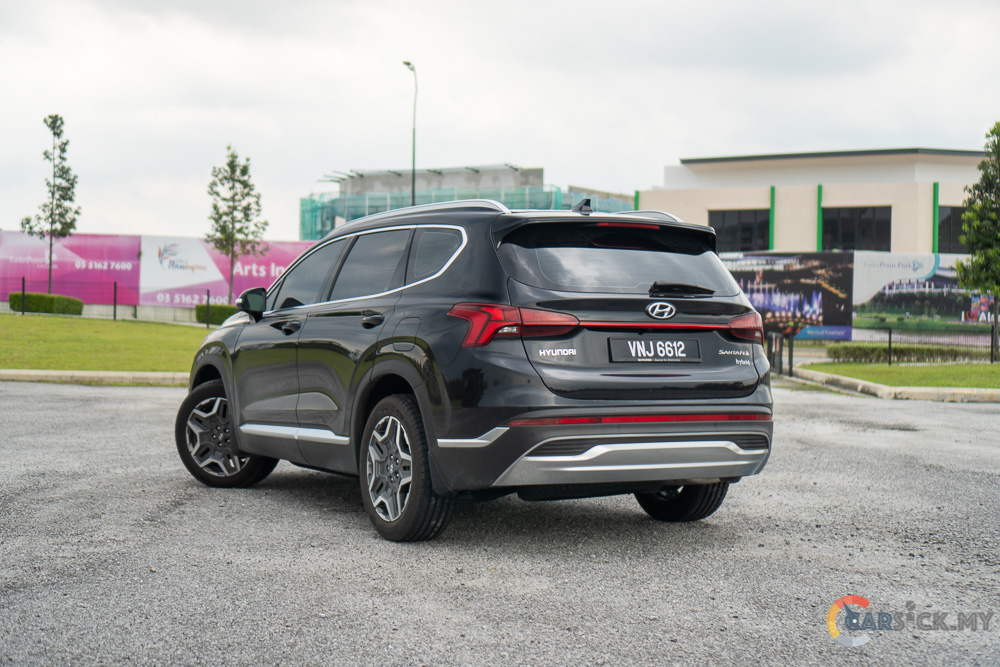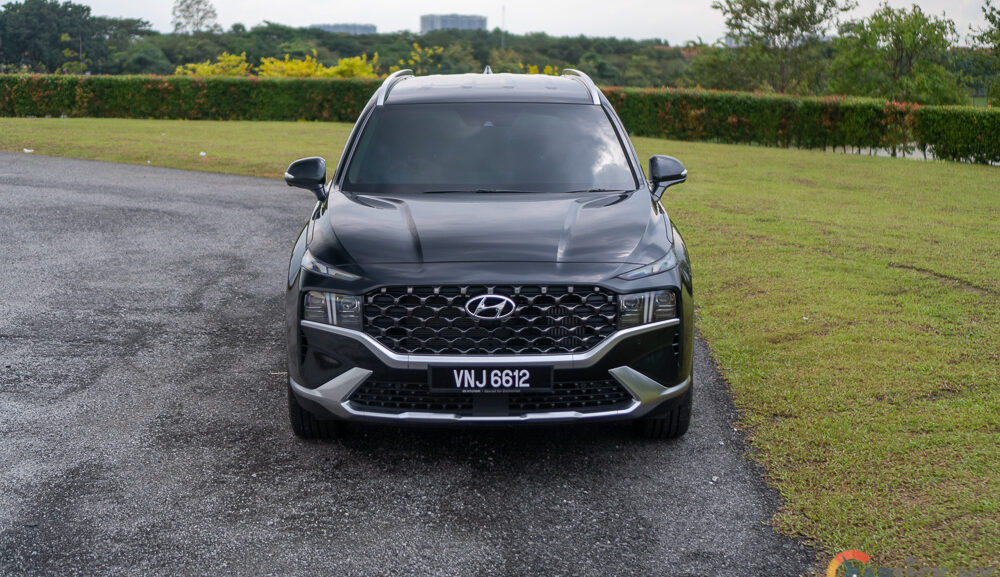A long time ago, Hyundai used to sell the Ioniq as a hybrid vehicle here in Malaysia. While it was somewhat successful, Hyundai has since gone quiet regarding new hybrid models. That changed in 2024, when Hyundai Malaysia decided to start selling the facelifted Santa Fe in a hybrid guise, aligning with their international powertrain strategy. The 2.4L engine has been phased out as Hyundai strives to meet global emission standards. Although this isn’t the latest Santa Fe model available in other markets, I was still quite interested in trying out this new-to-us powertrain. Can this 1.6L turbocharged hybrid engine truly have the capability to move such a large vehicle? Let’s find out.
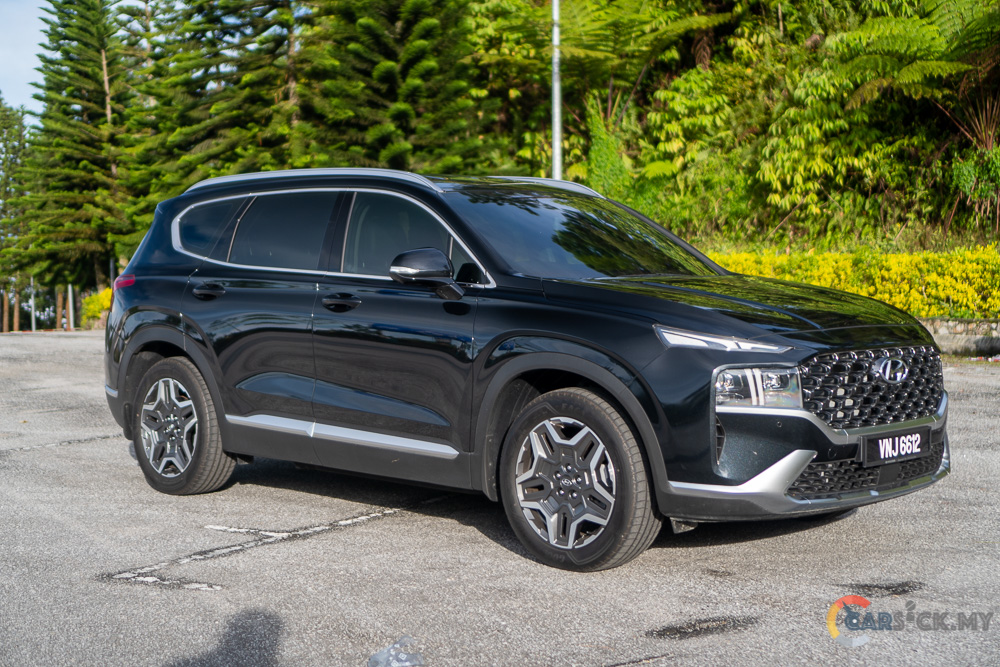
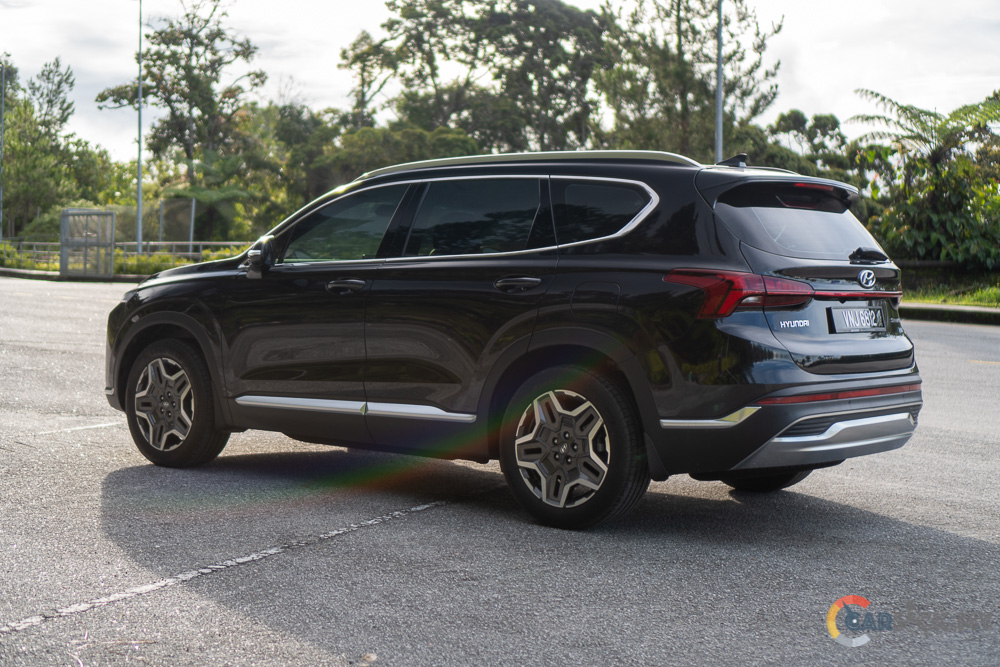 This hybrid Santa Fe is based on the older model, so the basic shape hasn’t changed much from the pre-facelift version. However, that hasn’t stopped Hyundai from making some cosmetic tweaks to keep the vehicle looking fresh. At the front, the separate daytime running lights and headlight setup have been retained, but Hyundai has made some design adjustments to better blend them with the new, larger grille. This grille not only refreshes the vehicle’s appearance but also gives it more road presence.
This hybrid Santa Fe is based on the older model, so the basic shape hasn’t changed much from the pre-facelift version. However, that hasn’t stopped Hyundai from making some cosmetic tweaks to keep the vehicle looking fresh. At the front, the separate daytime running lights and headlight setup have been retained, but Hyundai has made some design adjustments to better blend them with the new, larger grille. This grille not only refreshes the vehicle’s appearance but also gives it more road presence. 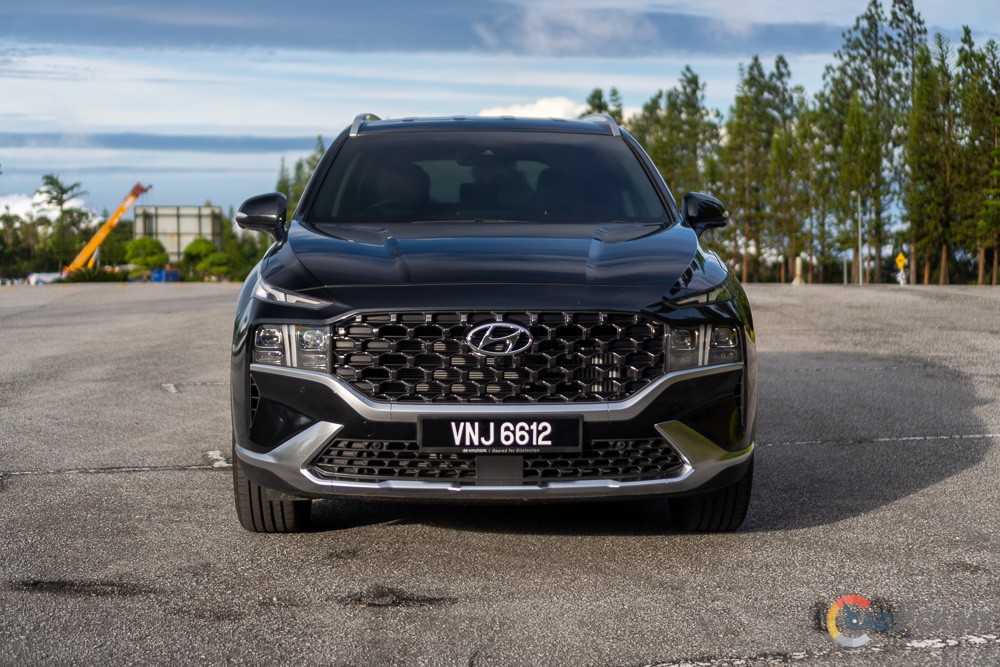
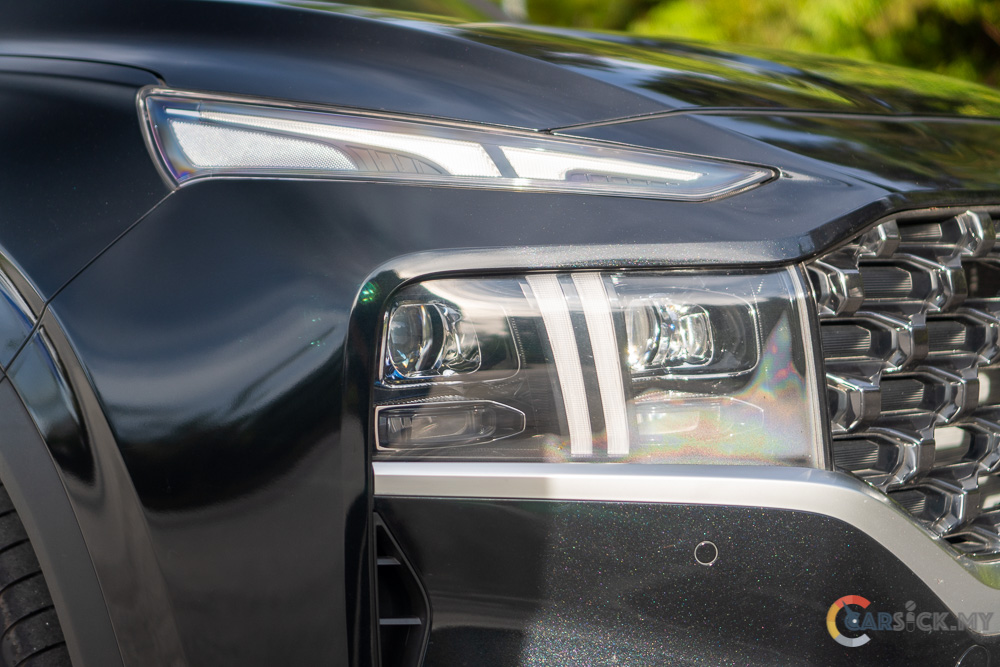
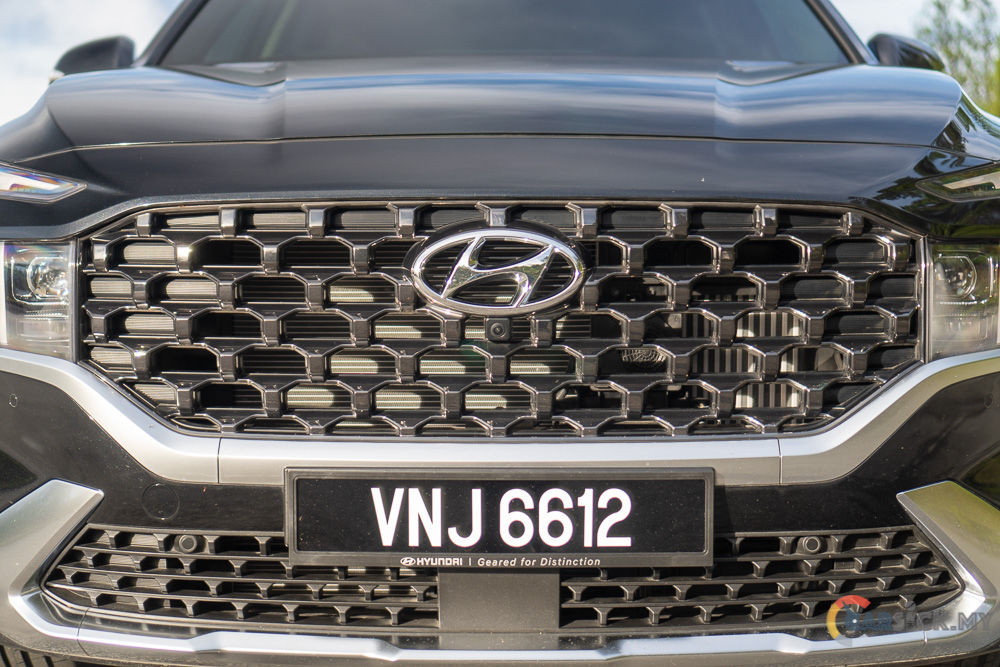
At the rear, while the changes are not drastic, there are still some subtle updates. The taillights now look different from those on the pre-facelift model, and they are connected by a red-colored strip. This gives the illusion of a light bar linking both taillights. The tailgate remains largely the same but now features hybrid badging to indicate its efficiency. The top-of-the-line Santa Fe Hybrid is equipped with a set of 19-inch rims, wrapped in 235/55 R19 tires. These rims help the Santa Fe stand out in a crowd of SUVs. 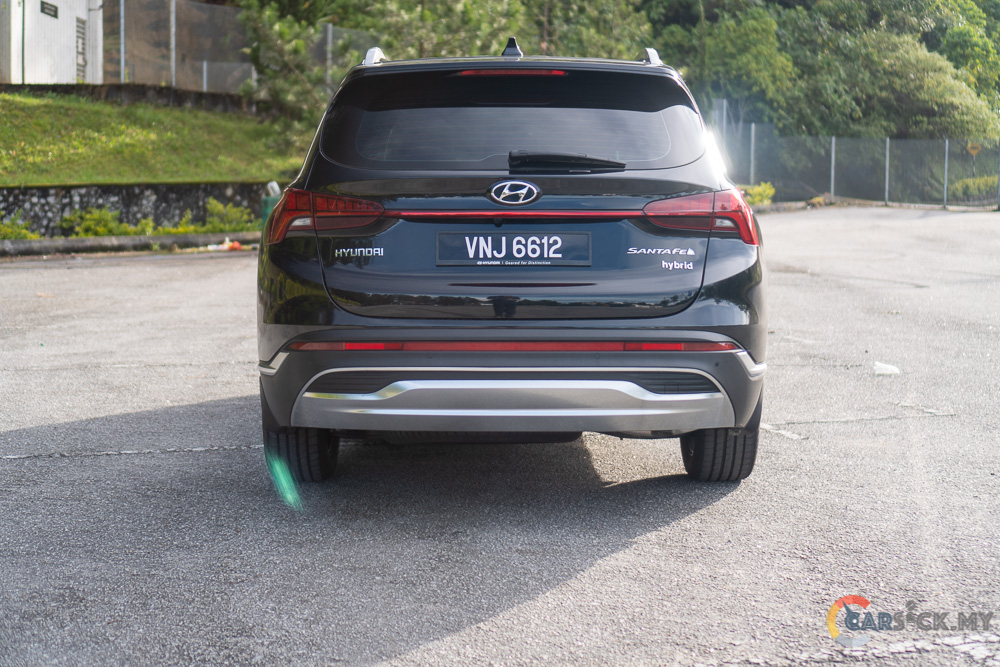
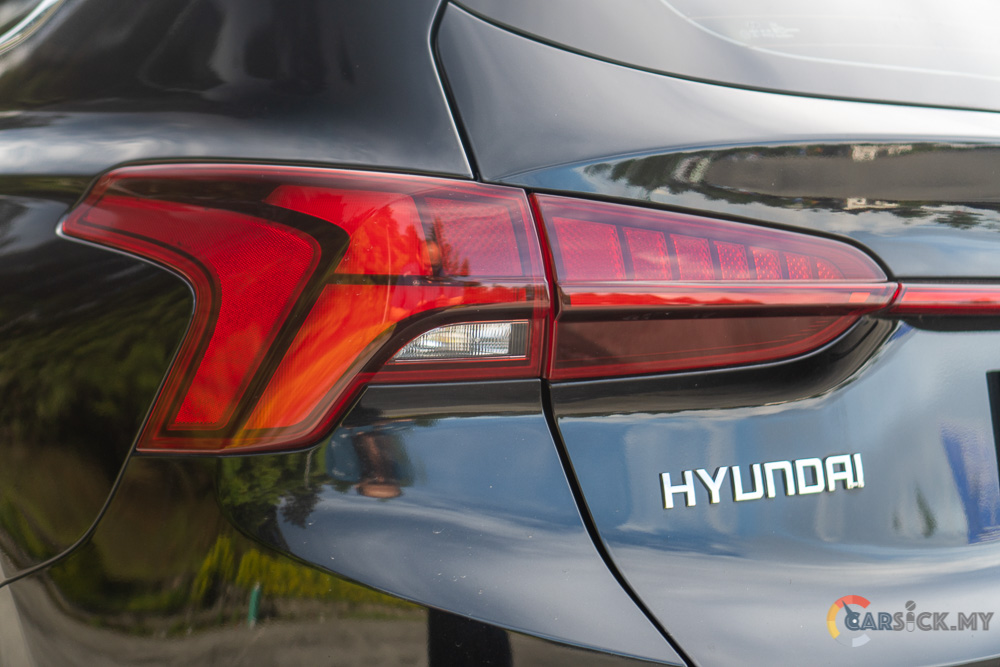
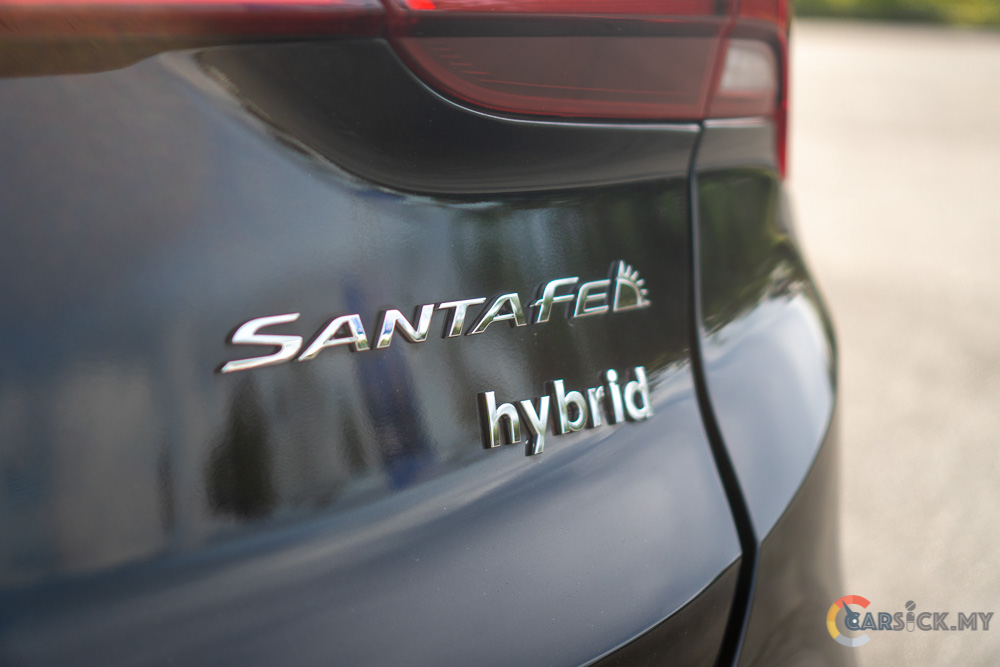
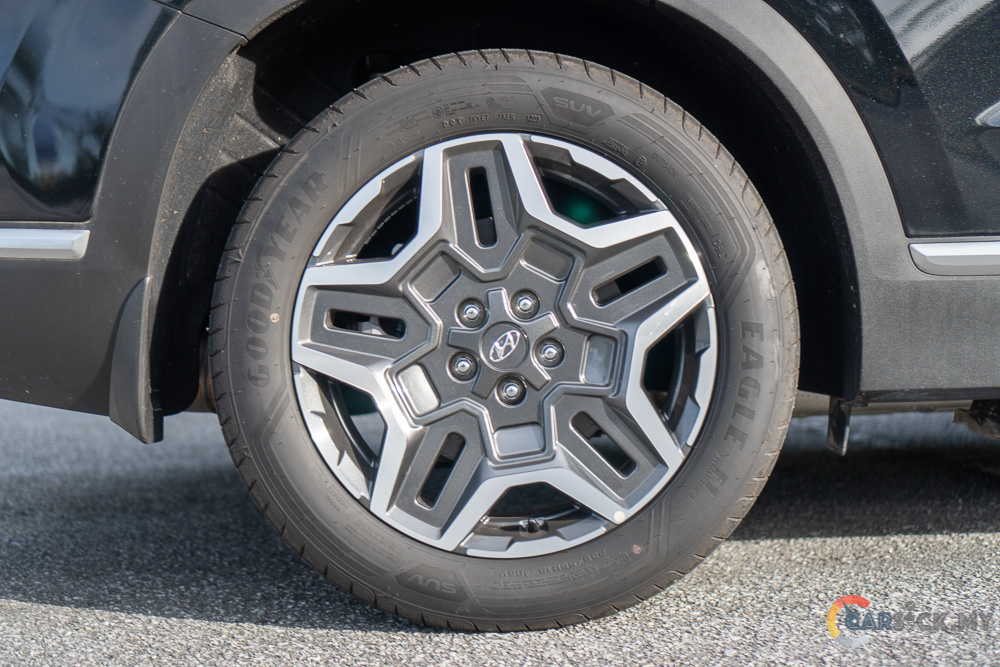
Stepping inside, the Santa Fe’s interior does feel a tad dated compared to newer competitors. The layout hasn’t changed much from its pre-facelift form, but Hyundai has added a few modern touches to keep things relevant. The most noticeable feature is the tall center console, which houses the gear selector and physical climate control buttons. Around the gear selector, you’ll find additional buttons for various functions, such as drive mode selection. There are also controls for the heated and ventilated seats. The entire dashboard feels solid, giving the impression that the Santa Fe is built to last.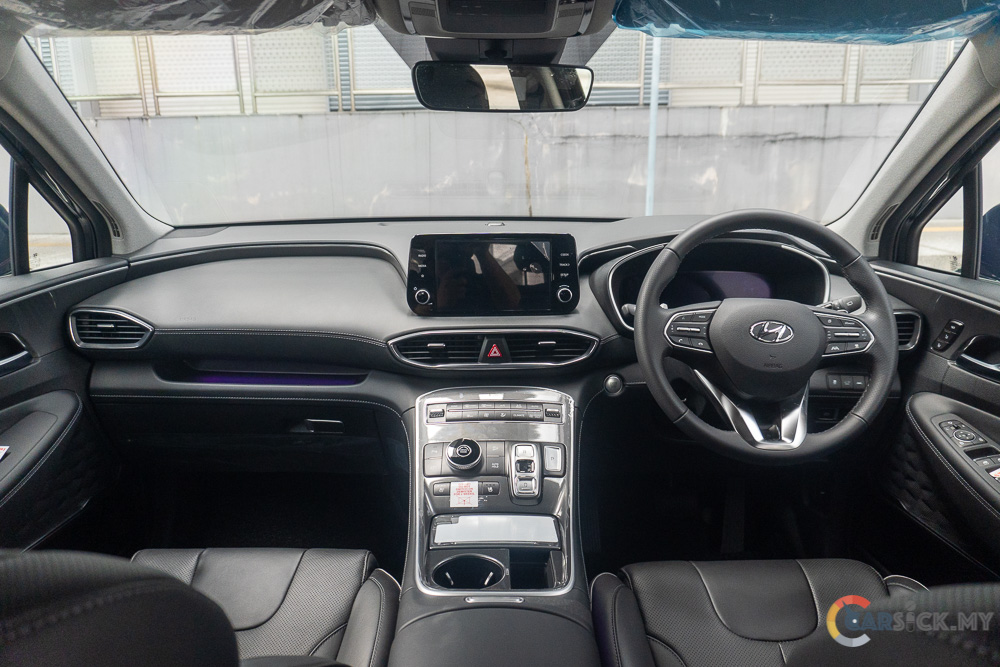
At the center of the dashboard sits an 8-inch infotainment screen. But in 2025, that size is on the smaller side compared to offerings from Chinese brands. I can work with it, but knowing that Hyundai offers a larger screen on the newer Santa Fe, I’ll give it a pass. At least this infotainment system supports wireless Android Auto and Apple CarPlay, keeping you connected even with the smaller display. On top of that, there’s also a 360-degree camera to assist with parking such a large vehicle—though, as expected from an older model, the camera resolution is on the lower side. 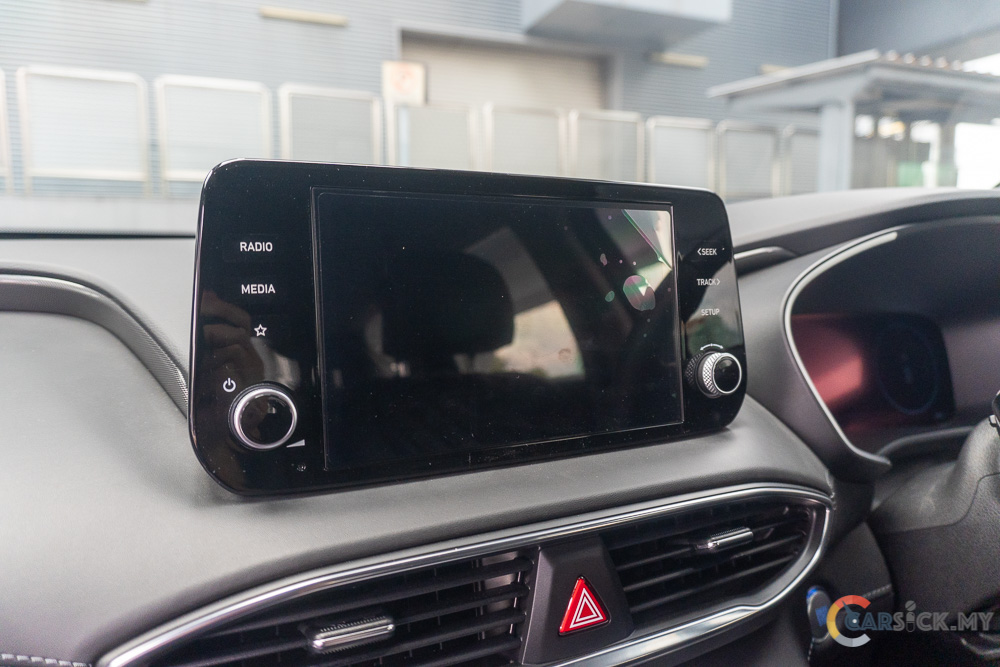
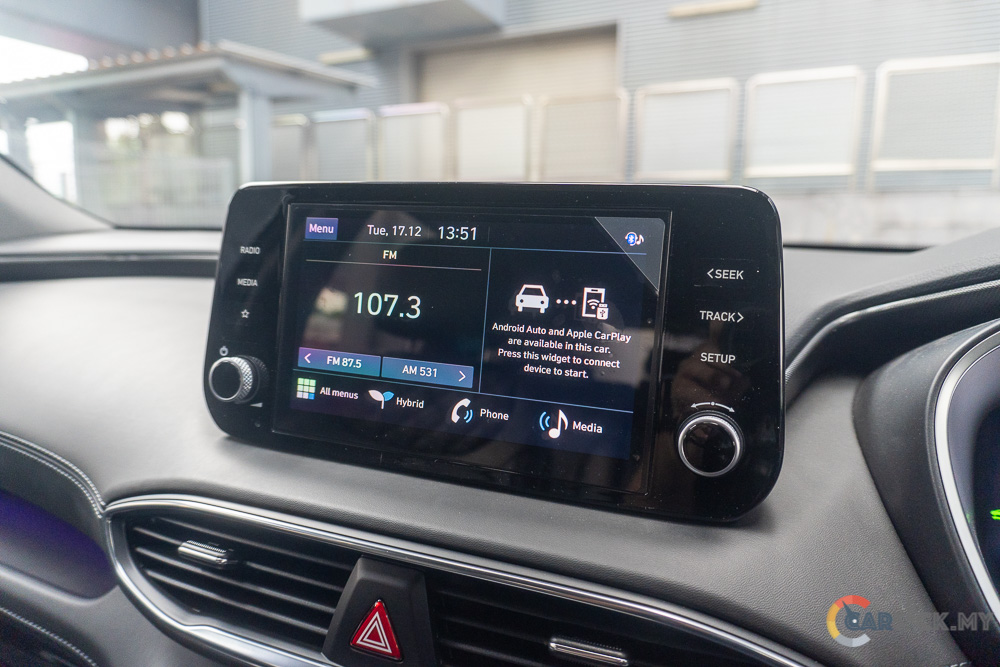
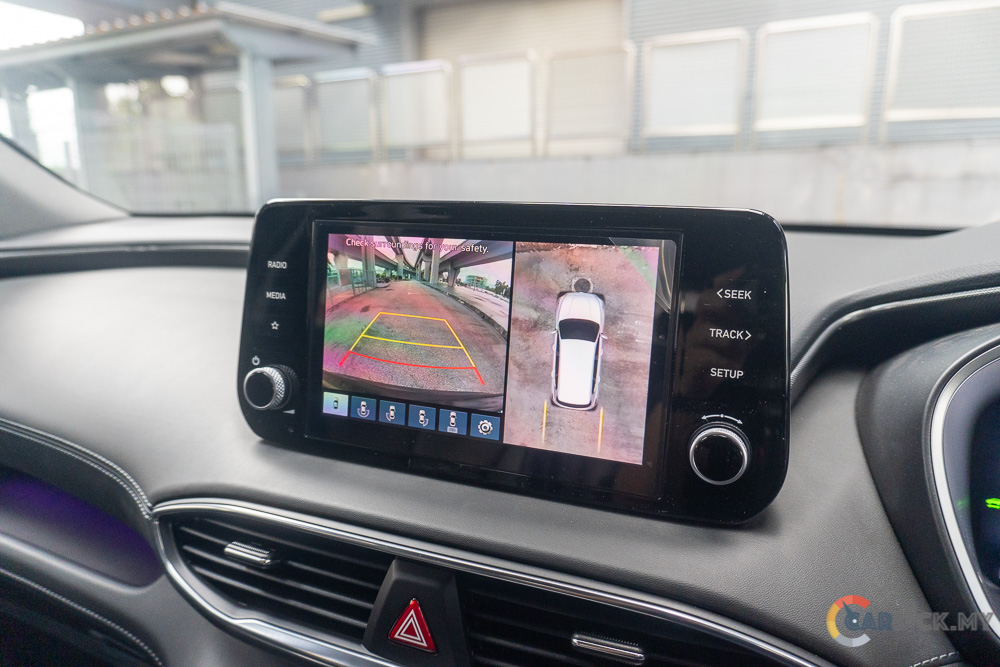
Beyond the infotainment screen, the instrument cluster has also been upgraded. It now features a 12.3-inch display with familiar Hyundai/Kia graphics. It’s actually larger than before and includes the well-known blind spot monitor. These are pretty much the only changes you’ll find inside the updated Santa Fe. In terms of space, it’s similar to the pre-facelift model. The SUV can comfortably fit five adults with their luggage most of the time. If you need to seat up to seven passengers, the Santa Fe can do so, though it’ll be a bit of a squeeze. As a 7-seater SUV, it remains as practical as ever. 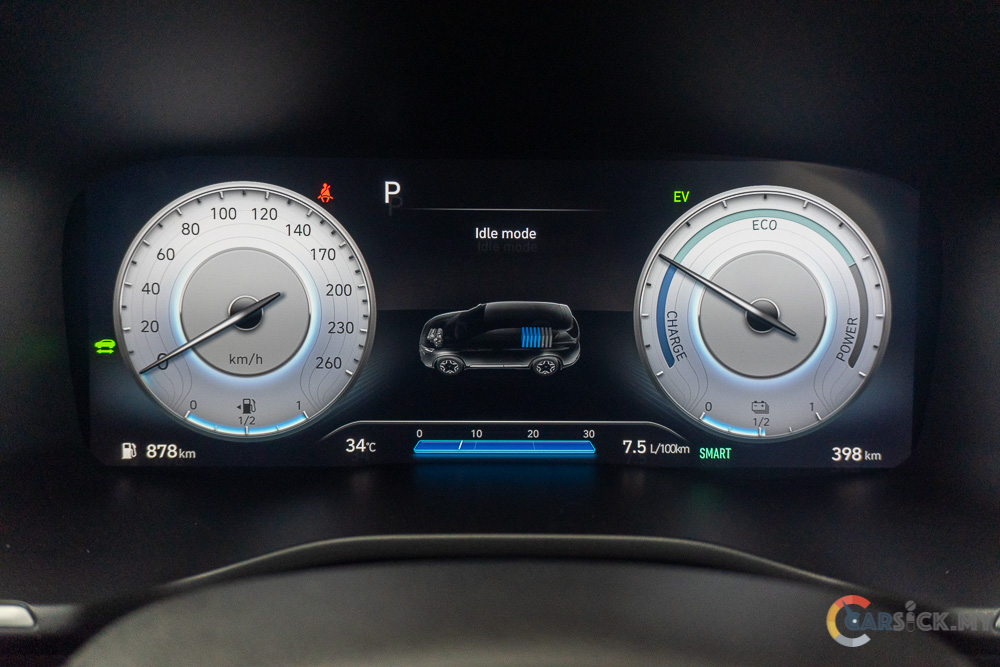
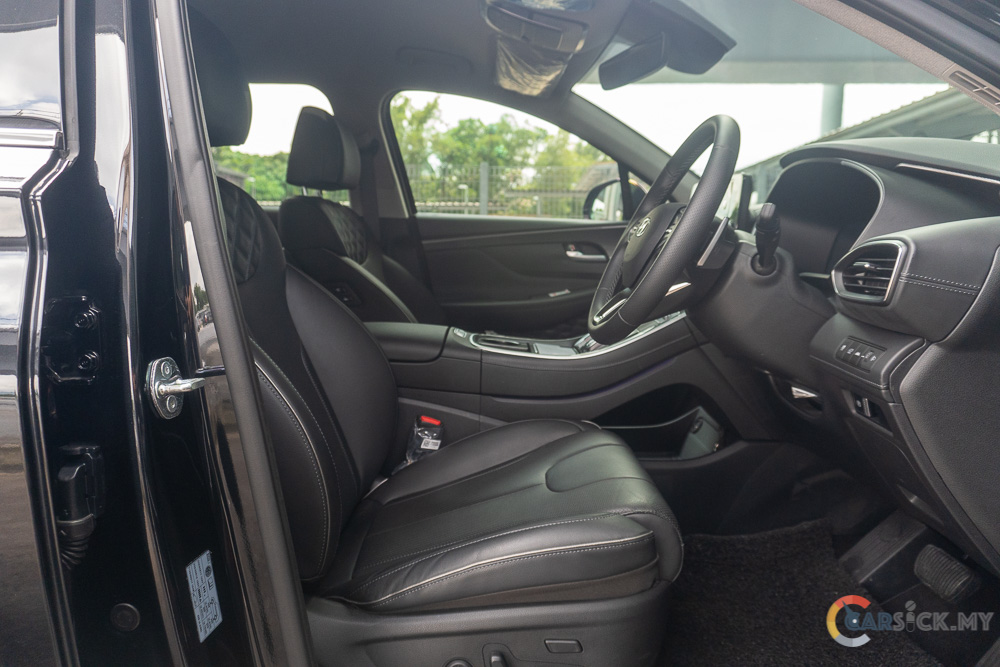
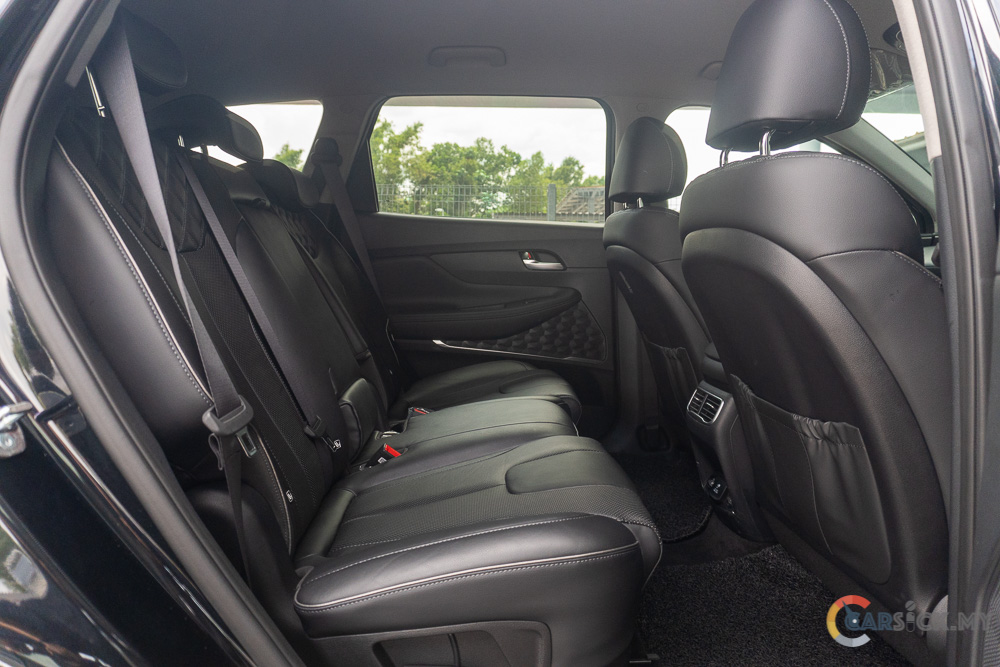
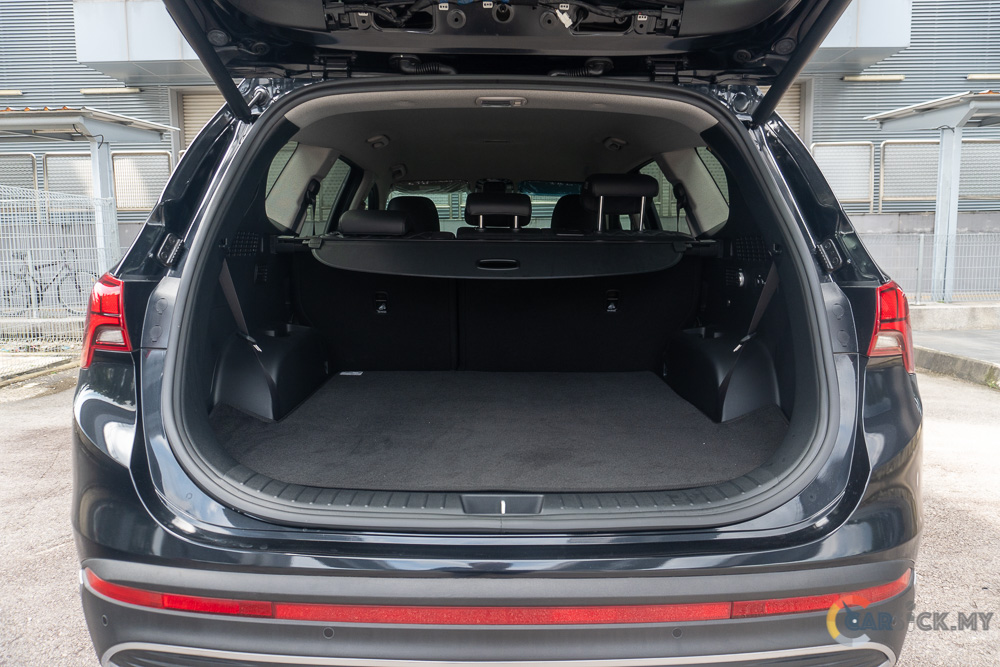
The main reason I wanted to review the Santa Fe lies under the hood. It’s powered by a 1.6L turbocharged hybrid powertrain. There’s no plug-in nonsense here—just pure hybrid goodness. This powertrain is mated to a 6-speed automatic transmission, sending power to the front wheels. It delivers a total output of 230 PS and 350 Nm of torque. 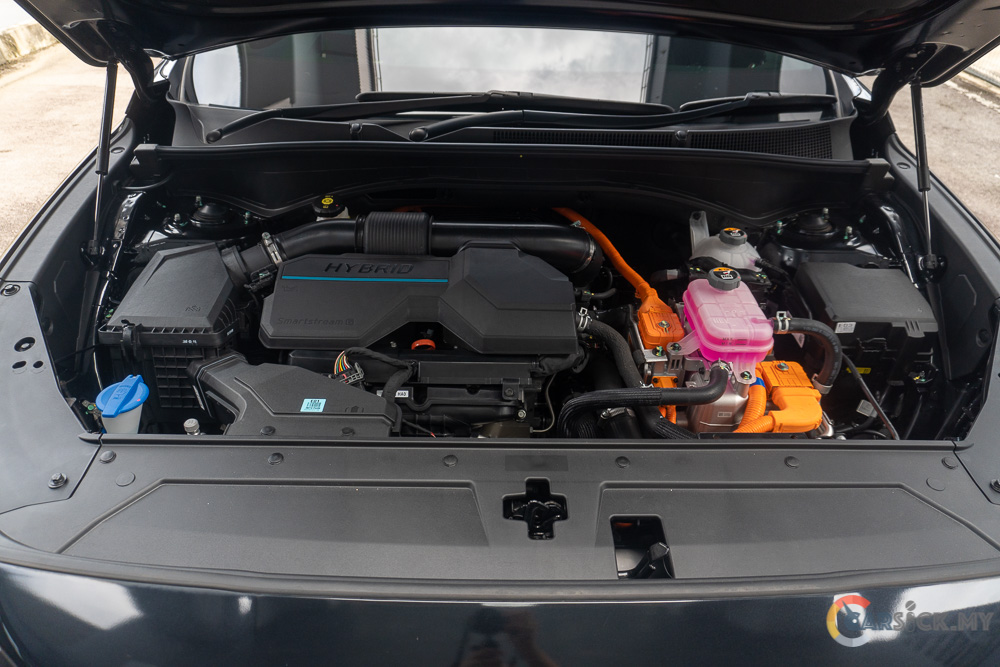
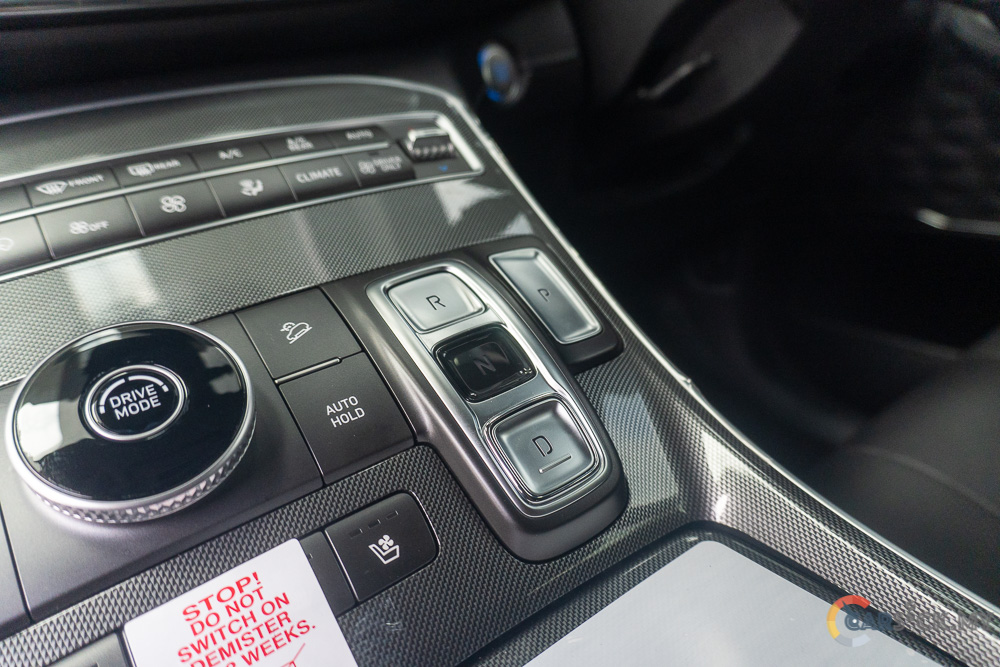
When I got behind the wheel of the hybrid for the first time, the word that instantly came to mind was “matured.” The powertrain feels exceptionally smooth—a testament to Hyundai’s commitment to refinement. The transition between petrol and electric propulsion is so seamless that it’s almost imperceptible. The only indication that the engine has kicked in is a subtle sound, but the change itself is nearly undetectable. One thing I really appreciate is how much power is available on tap. It allows the car to glide along the road like a vehicle with a much larger engine. While it may not offer a sudden burst of acceleration, it provides more than enough power to move comfortably, even uphill.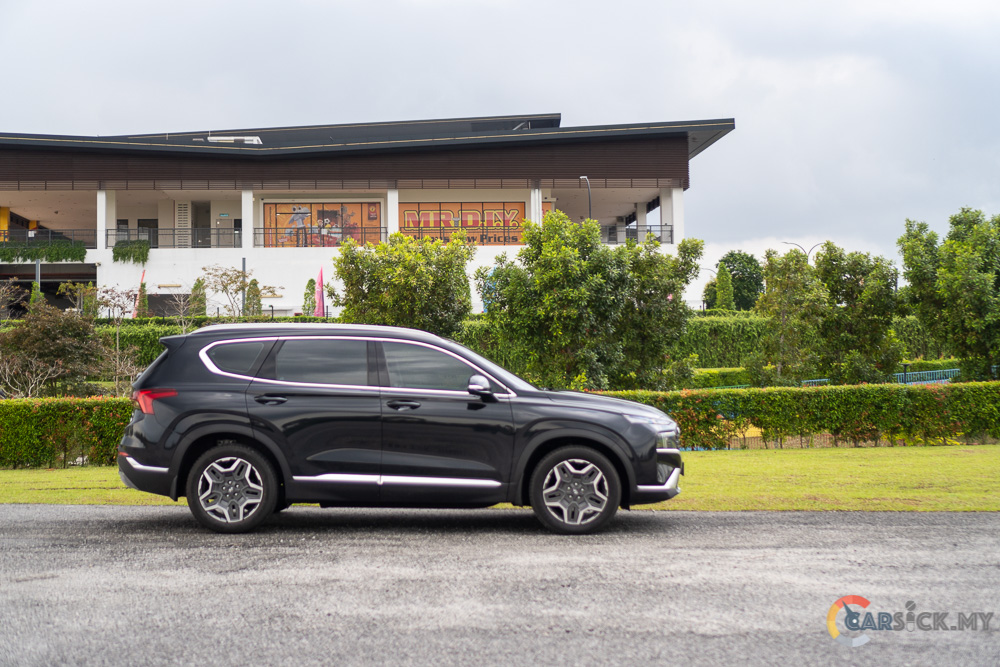
To unlock its full potential, you can switch to Sport mode. In this setting, the powertrain behaves more like a performance hybrid. The engine runs continuously, with the electric motor assisting by delivering extra torque when needed. This is especially useful when climbing hills, where you can feel a strong surge of torque without the engine needing to downshift. The powertrain is remarkably intelligent—so much so that I find the paddle shifters almost unnecessary. Of course, the best part about the Santa Fe Hybrid is its efficiency. Over 500 km of driving, I averaged 7.2 L/100 km in mixed conditions. For a vehicle of this size, that’s impressive. With a 67-liter fuel tank, a real-world range of 1,000 km seems achievable.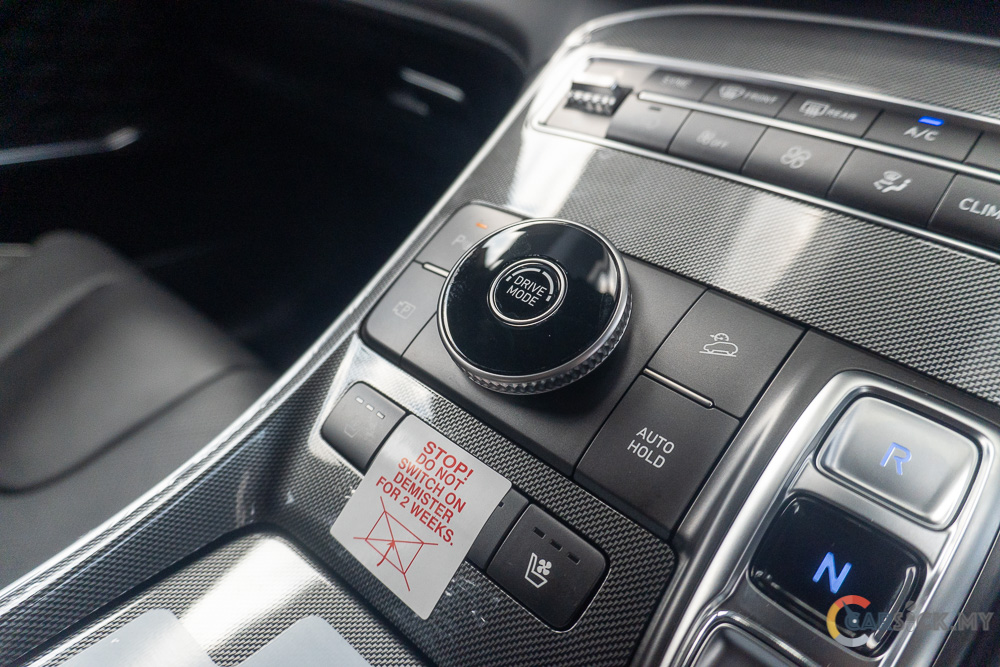
Despite its heft, the Santa Fe handles surprisingly well. In corners, I could feel the weight shift slightly, and it takes a moment to settle after going over bumps. Nevertheless, it still feels confident and composed. The steering is fairly sharp, allowing the driver to turn in with assurance. Another highlight is the suspension tuning, which strikes an excellent balance between comfort and sportiness. I really appreciate the ride quality—it smooths out road imperfections in a solid, refined manner.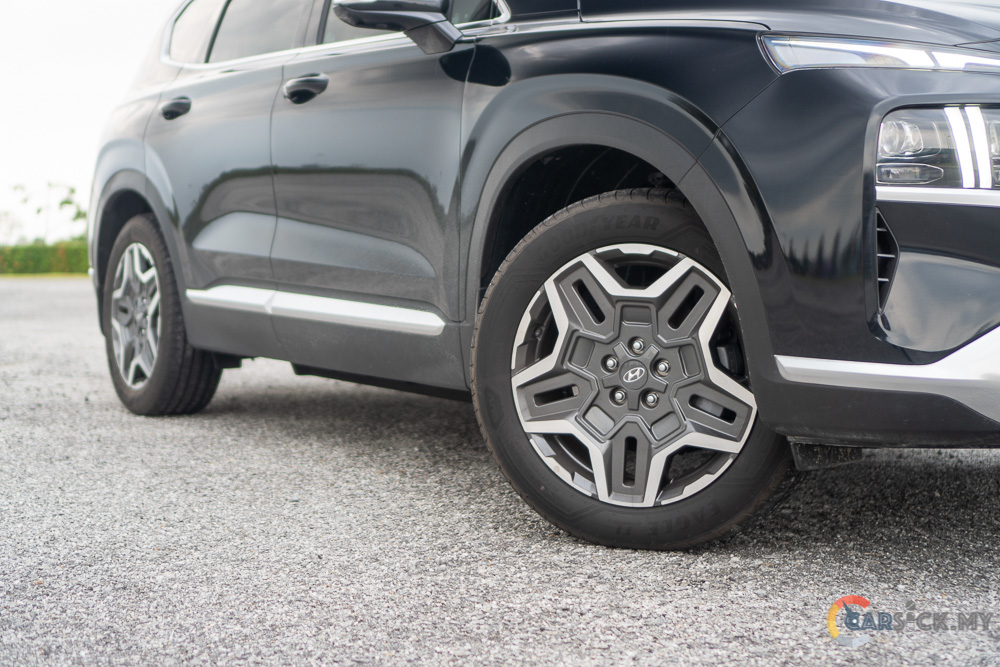
The Santa Fe also boasts impressively tuned brakes. They’re easy to modulate, and I can clearly feel the transition between regenerative and mechanical braking. In fact, the brake feel here is better than in some Chinese-made EVs. The brakes are also strong, giving the driver confidence when braking late. On top of that, the Santa Fe is fully equipped with modern Advanced Driver Assistance Systems (ADAS), making it feel more complete than ever.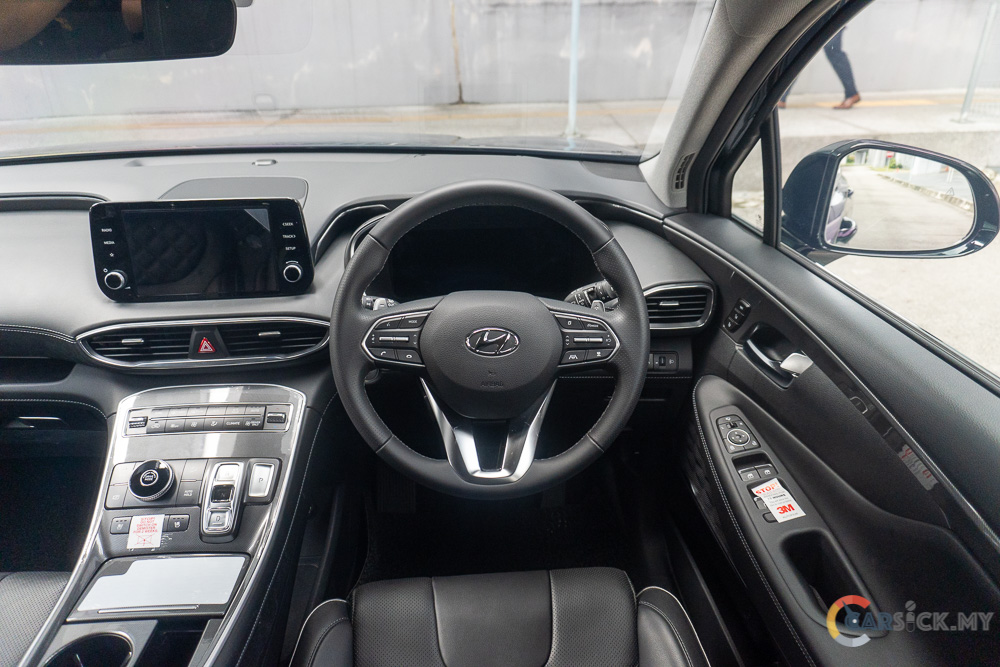
The Santa Fe Hybrid comes with Smart Cruise Control (SCC), Blind-Spot Collision Warning (BCW), Blind-Spot Collision-Avoidance Assist (BCA), Driver Attention Warning (DAW), Forward Collision-Avoidance Assist (FCA), High Beam Assist (HBA), Lane Following Assist (LFA), Lane Keeping Assist (LKA), Leading Vehicle Departure Alert (LVDA), Rear Cross Traffic Collision-Avoidance Assist (RCCA), Rear Occupant Alert (ROA), Safe Exit Warning (SEW), and Blind-Spot View Monitor (BVM). 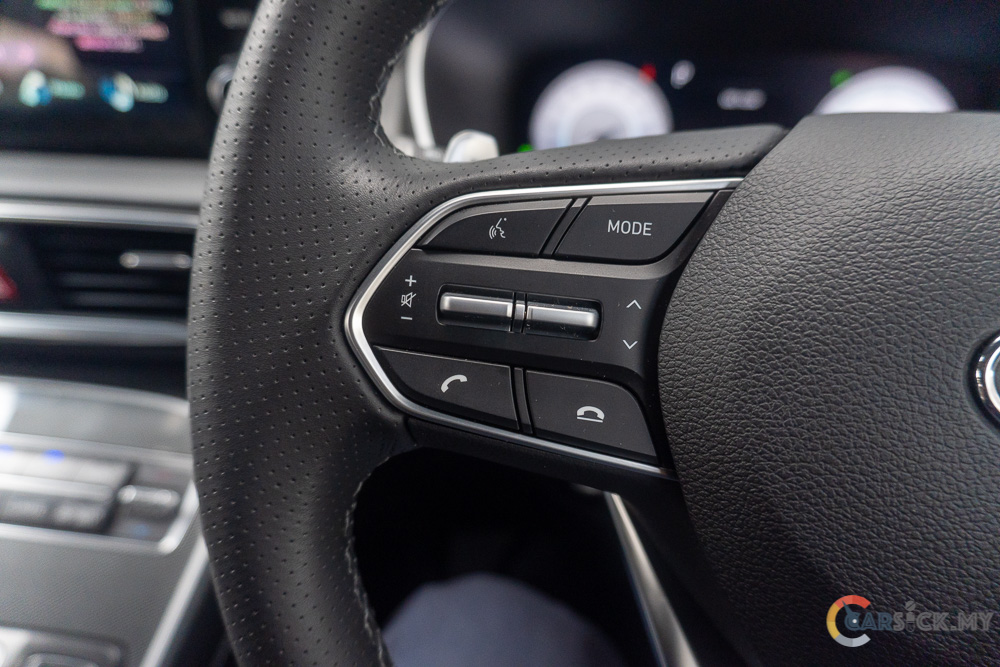
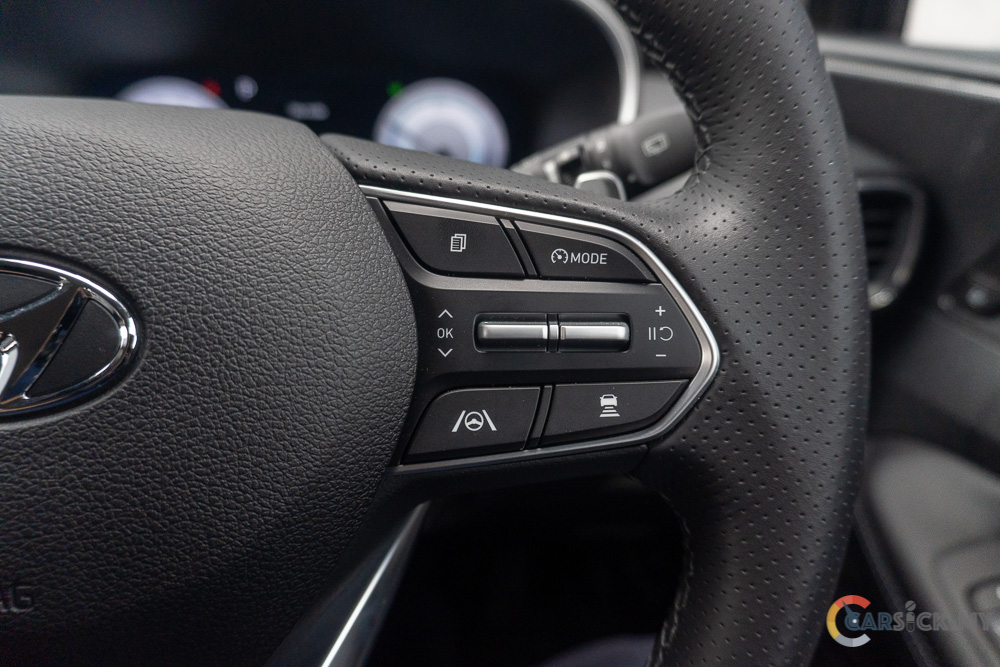
With a price tag of RM 205,888, the Santa Fe Hybrid offers great value for a vehicle of this size. After driving it, I’ve truly fallen in love with this powertrain. It’s also the first time I’ve found a hybrid powertrain that I genuinely enjoy. I know Japanese brands have long offered hybrids, but they tend to deliver just enough power—nothing more. If they introduced more powerful hybrid systems, I believe more people would embrace the hybrid lifestyle. The only downside to this Santa Fe is that we know a newer version exists elsewhere, which slightly diminishes its appeal. That said, this year we can expect to see even more hybrid powertrains arriving on our shores, giving buyers more choices than ever.
Check out the full photo album here.